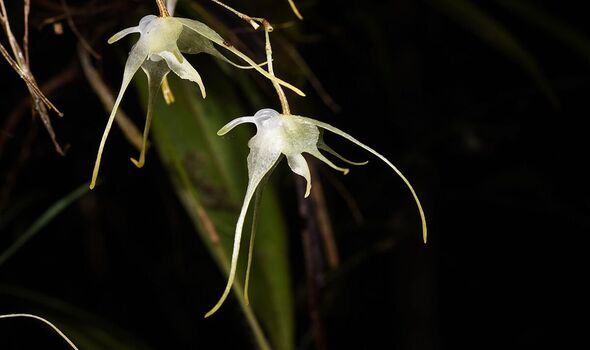Discovered on the island of Madagascar, the very rare blue-beaked Helmet vanga’s presence in a forest is the reason land has been protected from being cleared.
It’s estimated there are as many as 100,000 plants yet to be formally identified (Image: Fédération France Orchidées)
An orchid species saved by a rare bird is among scientists’ top picks of plant and fungal species named last year.
The newly described flower called Aeranthes bigibbum is the perfect example of how implementing protective measures for one species can help save another, researchers said.
Discovered on the island of Madagascar, the very rare blue-beaked Helmet vanga’s presence in a forest is the reason land has been protected from being cleared.
Dr Martin Cheek, senior research leader in Royal Botanic Gardens Kew’s Africa team, said: “It is imperative now, more so than ever, that we do everything in our power to go out into the field with our partners and work out which species of plants and fungi we haven’t given a scientific description yet.
“Without doing so, we risk losing these species without ever even knowing they existed.”
An explosive orchid discovered atop a dormant Indonesian volcano and a pair of underground trees discovered in Angola also make the top five.
Scientists from the Royal Botanic Gardens, Kew together with international partners present their yearly pick of the top 10 plants and fungi described as new to science in 2023.
On average, scientists name about 2,500 new species of plants and 2,500 new species of fungi every year and it is estimated there are as many as 100,000 plants yet to be formally identified.
Three new fungi found on the continent of Antarctica also make the list.
Dr Raquel Pino-Bodas, honorary research associate in comparative fungal biology at RBG Kew, said: “Although fungi are one of the three major groups of eukaryotes, along with plants and animals, most fungal diversity remains undiscovered. Only five to ten percent of all existing species are known. Undescribed fungal species are not only found in remote, unexplored areas, they can be found in every environment on the planet.
“It is absolutely critical that we pick up the gauntlet.
“Among this incredible diversity of fungal species, we are bound to discover new sources of food, medicines and other useful active compounds that can help us find nature-based solutions to some of the biggest challenges we face today.”


